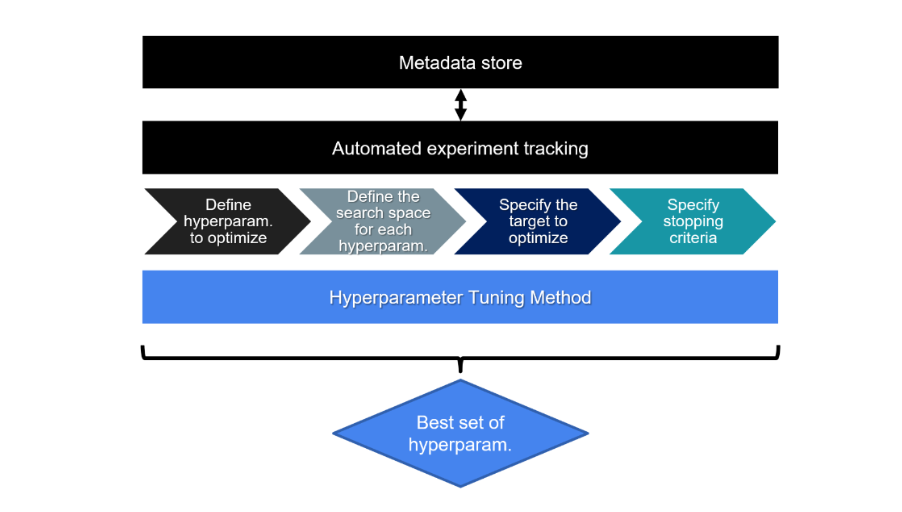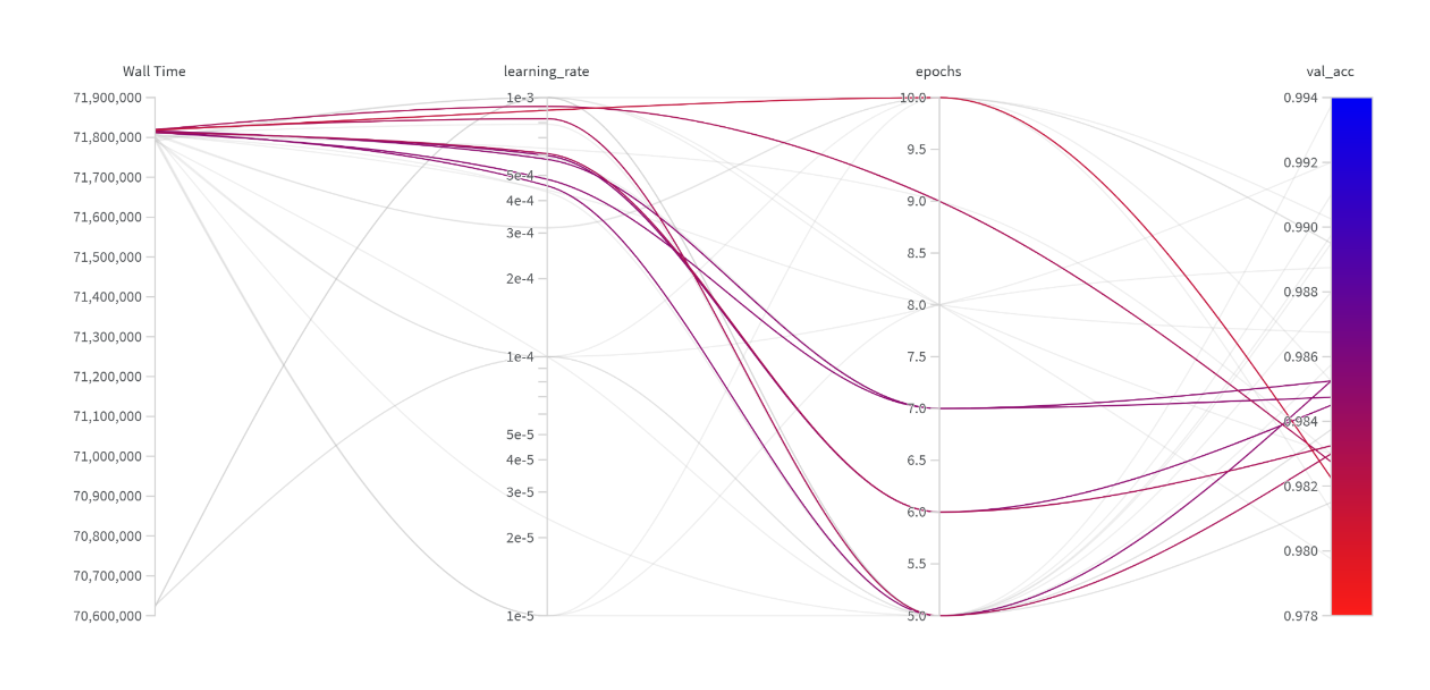Hyperparameter Tuning
Hyperparameters
Hyperparameters are values set before training that contorl the learning process.
- Hyperparameters must be chosen carefully
- They significantly influence the model's accuracy.
- Cannot be learned from data during training
Model parameters, like weights and biases, are learned during training. Hyperparameters, on the other hand, must be set before training begins. Examples include:
- Model Architecture in a Neural Networ;
- Number of branches in a decision tree
- Learning rate
Hyperparameter Tuning
Hyperparameter tuning is used to improve the performance of machine learning models.
- Adjusting hyperparameters to improve model performance
- Focus on factors like learning rate, number of layers, or tree depth
- Common starting point for model optimization
Tuning helps find the best combination of hyperparameters for the model.
Hyperparameter Tuning Methods
Different methods offer distinct approaches to hyperparameter tuning.
-
Grid Search
- Tests all combinations from a predefined grid
- Exhaustive but time-consuming
-
Random Search
- Randomly tests hyperparameter combinations
- Faster than grid search but can miss optimal solutions
-
Bayesian Search
- Uses Bayesian optimization to refine hyperparameter selection
- Efficient as it learns from past trials to guide future searches
Automated Hyperparameter Tuning
Manually finding the best hyperparameter combination is time-consuming. Automating this process helps find the best set of hyperparameters efficiently.
- Saves time and effort
- Leads to better-performing models
- Ensures optimal hyperparameter selection
Steps for Automated Tuning
These steps guide the automated tuning process to find the best model parameters.
- Define hyperparameters to tune
- Set search space (discrete values or ranges)
- Choose a performance metric (e.g., recall, precision)
- Set stopping criteria (e.g., maximum trials)

Environment Symmetry
Consistent settings across environments lead to reliable model performance.
- Ensures model behaves consistently across environments
- Prevents unexpected behavior when deploying models
Tracking Experiments
Automated tracking logs all tuning details to help manage experiments.
- Automate tracking of hyperparameter experiments
- Record all hyperparameter combinations explored
- Store metadata for later reference

Hyperparameter Visualization
Visualization helps in interpreting the effects of hyperparameter changes.
- Understand the impacts of different hyperparameters
- Helps analyze performance variations with different values
